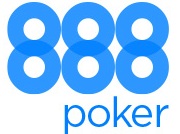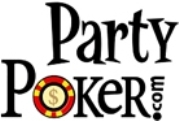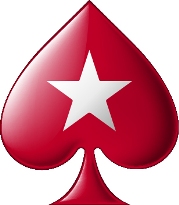Of all the things you need to consider in Omaha games, how close you are to the nut hand and how you could only be in contention for less than the entire pot have everything to do with whether or not you should still be in the hand and how much money you should be investing. If you’re way out in front, it is your duty as a profi t-maximizing poker player to get your money in. In Hold ’em, it’s possible you’ll lose all your action if you push too hard on the flop, but in Omaha the possibilities are almost endless. This does mean you’ll sometimes end up snatching defeat from the jaws of victory, but knowing where you are relative to other likely hands is paramount in Omaha. Let’s look at some basic situations in which it appears your hand is strong but is in fact weak. Suppose you hold Q♥-K♥-T♠-J♣, and you get the flop shown in this figure:


 In Omaha, the nuts don’t often stay nutty
In Omaha, the nuts don’t often stay nutty
You have flopped the nut straight! As Andy Garcia’s character said to Brad Pitt’s character on the phone in Ocean’s Eleven, “Congratulations, you’re a dead man.” The problem you are facing is that you have no redraw to speak of. The only way you could improve your hand is by making a full house, which would mean another King and one of your other cards would have to come runner-runner or two Queens, Tens, or Jacks would need to come runner-runner. Two Kings runner-runner would give you quads, but that’s not terribly likely. The odds of exactly two cards coming on the turn are about 1,000 to 1. It’s called perfect-perfect by the player who hits it and @#%*$%! perfect-perfect by the victim. But wait! You may say, “I thought I flopped the nuts. Doesn’t that mean I have the best hand?” Yes, it does, but the problem is, the nuts can usually change when the next card comes. If the J♦ comes, for example, the nut hand has changed from an Ace-high straight to a Royal Flush, completed by Q♦-T♦.
As amazing as it may seem, the nut straight hand with no redraw is close to dead against these hands. See The table below for how the simulation results break down.
Omaha High Hand Results |
|
| Hand | Percentage of Money Won (Flop = A♦-K♦-T♥) |
| Q♥-K♥-10♠-J♣ | 27.8% |
| A♣-10♣-10♦-8♥ | 18.7% |
| K♣-Q♠-J♦-9♦ | 53.5% |
| J♠-9♣-9♥-8♣ | 0.0% |
The important thing to consider here is that the dominant hand is behind after the flop, in that the player has two pair and a flush draw to go against the made straight. But how in the world will this translate into 53.5 percent of the money? Let’s walk through it.
First and foremost is the fact that the big hand has the straight along with you and a flush redraw. This hand is the only one with two diamonds in it, which means it can only make a flush. It wins even if four diamonds end up on the board; remember that in Omaha, exactly two cards from your hand must be used. No singleton flushes, full houses, or straights work in this game. One card is good to make quads when three of a kind end up on the board, though, as any other card from your hand will be used as the fi fth one. But anyway, the straight is made, and the flush redraw is also there. What’s interesting is that the set of Tens held by the second player isn’t all that strong, winning a little less than one-fi fth of all money. Most of this player’s money will be won when the board pairs, giving them a full house without giving someone a higher full house. It’s diffi cult for an underset full house (in this case the set is of lower rank than the pair) to win in Omaha, but obviously it does happen regularly. Be wary if the board has high cards with one of them paired up, as someone who likes to play wrap hands (hands with lots of straight and flush possibilities) might just have caught a better full house. A good friend calls Omaha high the place where you “peddle the nuts.” She makes sense when she says these things.
You can likely see how the lowly J998 is hopeless. First, it has no flush draw. Second, it has no chance to counterfeit the Ace-high straight because the highest straight it can complete is King high. Remember, two cards must be used. A straight starting at Nine only makes it up to the King. In addition, any full house will lose because the Nines will lose to the set of Tens, or any other set will necessarily win out over this hand. Finally, it is impossible for the poor slob to catch four of a kind, as another player has a Nine in their hand. Check and fold—oh well.
The second hand we’ll look at is a key example of how a positively raggedy hand turns into a monster in the blink of an eye. As an example, look at the following four hands before the flop:
Omaha High Hand Percentages before The Flop |
|
| Hand | Percentage of Money Won |
| A♦-A♣-8♦-T♠ | 36.6 |
| J♣-9♣-10♥-4♠ | 19.7 |
| 6♥-6♦-K♣-J♥ | 22.3 |
| K♠-Q♠-7♦-7♣ | 21.4 |
As you can see, the pair of Aces has a diamond flush draw and two ways to make a nut straight (Ace-high with a board of King-Queen-Jack and Jack-high with a board of JackNine-Seven) as well as full house possibilities with the best set possible (Aces). Note that the rest of the hands will also do well less often but still with regularity. The second hand has one almost useless card in the 4♠, but it does enjoy the only club flush draw and a three-card wrap straight opportunity. The third hand has a high-straight opportunity with the K♣-J♥ combination and a pair of Sixes as well as a bad but sole heart flush draw. Finally, the fourth hand has a high spade draw with the King and Queen, the nut straight possibility, and a pair of Sevens. It all depends on the flop, then! Say it is the flop you see here:


 Once again, the flop determines your hand’s value
Once again, the flop determines your hand’s value
Everything changes with this flop. The new percentages are in the table below:
Omaha High Hand Percentages after the Flop |
|
| Hand | Percentage of Money Won (Flop = 6♠-8♣-K♦) |
| A♦-A♣-8♦-T♠ | 16.0% |
| J♣-9♣-10♥-4♠ | 15.2% |
| 6♥-6♦-K♣-J♥ | 62.2% |
| K♠-Q♠-7♦-7♣ | 6.5% |
As you see, the hand with the pocket Sixes is now dominant. Even without a flush draw, as no hearts are on board, the set of Sixes after the flop approaches the two-thirds mark in total money won. Not only is it the only hand that will make a full house if the board pairs on the turn, but it will also make Kings full of Sixes if the case (only remaining) King comes before the end of the hand. The hand with the pair of Aces is drawing to another Ace to give it top set. Luckily for it, a third Ace on the turn will not give anyone a straight. It will also not complete a flush as the flop came rainbow (three different suits). It also has a backdoor flush draw, as runner-runner diamonds on the turn and river will win the pot. In fact, in this example, it is impossible for the board to pair if two diamonds do in fact show up. Can you see how that is? Notice the flop has one diamond, the King. Now see that the other two ranks, Six and Eight, already have the diamond accounted for in the third and first hands, respectively.
In pure matter of fact, this is a false dilemma, because in a board game like Omaha it is impossible to know specifi c cards are dead (out of play or in play in another hand) unless you yourself hold them (in brick-and-mortar games, cards may be exposed accidentally or people may not protect their hand well enough). But the ability to answer the question we posed to you demonstrates a skill that a poker player needs to succeed: Know what can beat you. In brick-and-mortar Stud, the ability to follow dead cards is critical.
Let’s talk about the fourth hand, and incorporate the second into the discussion. The fourth hand has very limited possibilities and only wins 6.5 percent of the money over time. The only way it wins is if the turn and river cards both help it. The best way for it to win is for the two remaining Sevens to come perfect-perfect. A slightly more plausible way for it to win is for a King and a Queen to come, giving the player the best full house possible in that situation. A King and a third Seven would also give it a winning full house. But what if a Seven comes on the turn? Wouldn’t that mean this hand is now crushing the set of Sixes? Yes, but that’s not relevant because the second hand has just completed a Jack-high straight. So many possibilities? Yep. Welcome to Omaha. The player holding the straight would then hope something like the 3♥ comes on the river, as it would not pair the board, complete a flush, nor enable a higher straight. The second hand has several ways to make a straight, but it’s a big underdog because there are a lot of ways for a higher straight, a flush, and a full house to make by the end of the hand.










